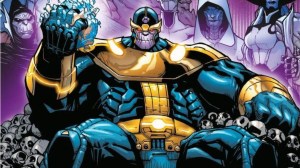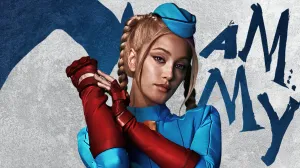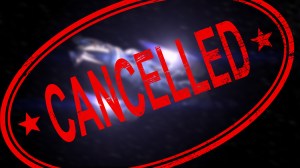
Since that statement can be interpreted as an in-story or out-of-story descriptor, we’ll just leave it at that.
Videos by ComicBook.com
What do you need to know for the just-announced Convergence story to make some kind of sense?
Well, here’s where we’d start…
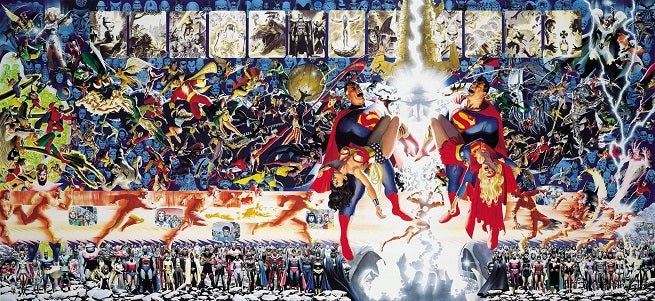
By the time we start, the multiverse was pretty well-established. In fact, we’re starting with the moment where DC’s multiverse of infinite possibilities collapses and dies.
The Multiverse was created by Krona, a member of the same ancient race that later spawned the Guardians of the Universe, when he tried to peer through a machine to see the dawn of time and the creation of the universe. The result was explosive, introducing entropy into the universe and shortening its lifespan significantly.
It also shattered reality’s core at the start of time, creating an infinite number of parallel worlds and setting the stage for Crisis on Infinite Earths. You see, in the beginning, there was a matter universe, overseen by the Monitor, and an Anti-Matter universe, overseen by the Anti-Monitor. The two coexisted in uneasy peace for millennia, until the Anti-Monitor realized that the fractured nature of the matter universe meant that he could start destroying matter universes and allowing antimatter to overflow into them, building his domain.
He almost succeeded, destroying all but a few, which then had to merge in order to defeat him and become the sole remaining DC Universe.
Well, for a long time anyway.
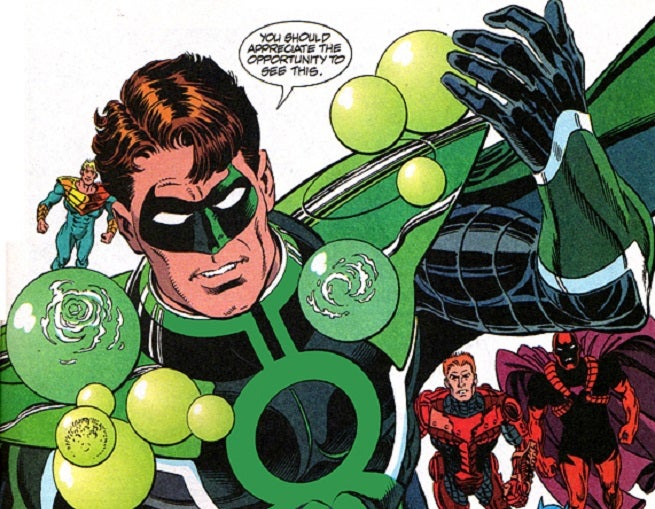
One of the earliest indications that DC was open to exploring some of the doors thought closed by the end of Crisis, Zero Hour saw a number of “chronal anomalies — mostly characters and concepts that no longer existed as a result of Crisis, or had been significantly altered in its wake — seeping into the DC Universe.
Barbara Gordon, confined to a wheelchair as Oracle, started swinging rooftops again as Batgirl while Hal Jordan — then the psychotic villain Parallax, who later proved to be the source of the universe’s aggravation — showed up as a young hero again.
At the end of the day, this story reworked DC’s timeline — and provided a literal one for future reference — while not really changing much in terms of the multiverse. It was still gone, and there wasn’t any easy way to get it back.
…Right?

For years, DC’s non-multiverse multiverse were the stories that appeared in the pages of their Elseworlds titles.
Stories like Superman: Red Son, JLA: The Nail and Kingdom Come would come into the popular consciousness through this label that purported that all of the stories were imaginary, and had no bearing on the continuity of the DC Universe, opting to use that freedom to used DC characters to tell bold, different stories that they probably couldn’t get away with in the monthlies.
However, some of them became wildly popular. A number of them currently exist in the reimagined DC Multiverse and even before that, there was one particular story that kept coming back into play over and over again.
That would be the aforementioned Kingdom Come.
The ’90s’ answer to The Dark Knight Returns, the story featured a long-retired Superman and the (fairly awful) world left behind when he stopped being Superman. He’s forced out of retirement by a major tragedy and starts the world on the path to recovery, answering that most-loved comics rhetorical “Why does the world need a Superman?”
It was only three years after Kingdom Come that The Kingdom came along, implying that the dark world of Kingdom Come was indeed our future. A powerful being was sent back from the future with a mission to kill Superman (as he’d done day after day for years as he traveled back in time over and over again) before the events of the story could come to pass.
Ultimately, the story proved only that time is not solid — that the future isn’t set — and introduced the concept of Hypertime, a way to have a world of infinite possibilities without actually having physical alternate worlds that characters could travel to.

The first “official” and direct sequel to Crisis on Infinite Earths, the story was written by Geoff Johns, now DC’s Chief Creative Officer, to celebrate the twentieth anniversary of Crisis.
The villains in the story were a group of heroes left over from the first Crisis who, left alone in their solitude and viewing the past through rose-colored glasses, believed the current DC Universe to be “unworthy” to continue and hoped to restore earths destroyed during the Crisis to make the multiverse a better place.
In spite of their failure, the multiverse re-emerged briefly during the story before being destroyed…
…or was it?

Way too much happened during this year-long, 52-part miniseries (plus tie-ins) to touch on here, but the important part, as far as the multiverse was concerned, was Booster Gold’s story. He teamed with Time Master Rip Hunter and realized that time was “broken,” leading to the eventual discovery of a (now-limited) multiverse composed of 52 worlds, many of which were familiar to long-time readers.
Booster and Rip had to battle Mr. Mind, who possessed Booster’s AI Skeets and tried to gain access to the multiverse. Once they defeated him, they had to keep their knowledge of the multiverse quiet at all costs…

Betweeen 52 and Futures End, there was Final Crisis — but it was really just a multiversal battle. Many of its themes, imagery and villains are being revisited in The Multiversity now, which also has the added benefit of taking readers on a trip through the multiverse for the first time since it was re-established in 52. It’s worth a read, especially if you really enjoy the others, but it doesn’t actually change the multiverse at all or alter the status quo, long-term; it merely defends the status quo we’re left with at the end of 52 from threats that emerged during the run-up to Final Crisis in the much-loathed Countdown maxiseries.
Back in September, though, DC Comics had their Futures End event month, in which Booster Gold had a solo one-shot wherein it was revealed that an older version of the hero seen prior to Flashpoint (but after 52, in Booster’s solo series) was in fact still alive and apparently still from the pre-Flashpoint universe.
What’s more, it was revealed that a mysterious villain (apparently Brainiac) was seeking access to Booster’s headquarters at Vanishing Point, an asteroid outside time that allows him access to the timestream and multiverse.
…Uh-oh.




